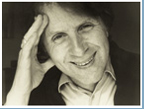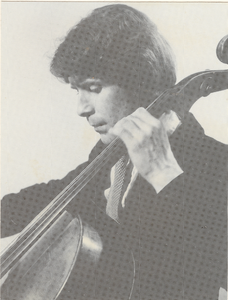
An important figure in the field of Icelandic contemporary music with a growing
international reputation, is Hafliði Hallgrimsson. Born in 1941 in the small town of Akureyri
on the north coast of Iceland.
He began to play the cello at the age of eleven and from 1958-1962 studied the cello at the
Music School in Reykjavík. The following year he attended classes given by the legendary
cellist Enrico Mainardi in Rome.
Having been a member of the Icelandic Symphony Orchestra from 1963-1964, he continued
his studies in London at the Royal Academy of Music. He was awarded the coveted Madam
Suggia Prize and a Recital Medal when leaving the Academy in 1966.
Following his studies at the Academy, he studied composition privately with Elizabeth
Luthyens, Dr. Alan Bush and Sir Peter Maxwell Davies.
His music has been performed by important soloists and orchestras in many parts of the world.
A critic of the Guardian described his music in 1992 : As “being in dreamtime and dreamspace,
both of which are accessible, yet also disconcertingly new and strange. This music is strongly
original and personal, yet immediately enjoyable. It yields more and more on repeated hearings.
It is obviously made with consummate skill, and yet it remains enigmatic. It often defies
academic analysis. It is both refined and earthy. It is abundant in colour and feeling”.
He remained in Britain and became a member of the Haydn String Trio and freelanced for
several years with many of the most prestigious chamber orchestras in London, such as the
Monteverdi Orchestra, the English Chamber orchestra, and the Menuhin Festival orchestra.
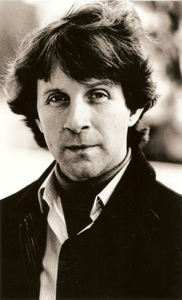
In 1977 he moved with his family to Scotland to take up the position of principal cellist in
the Scottish Chamber Orchestra, but in spite of his success as a performer, the urge to compose
became stronger and in 1983 Hallgrimsson left his post with the orchestra to devote himself to
composition full-time.
His catalogue includes instrumental, chamber and orchestral works as well as music theatre
and an opera.
He achieved international recognition for the highly successful POEMI (1984) for violin and
string orchestra written specially for Jaime Laredo and the Scottish Chamber Orchestra.
POEMI was awarded the prestigious Nordic Council Prize in 1986 after winning the second
Prize at the 1985 International Wieniawski competition in Poland.
It's not surprising that many of his compositions are for strings, and are central to his catalogue.
Many of his major works are concertos for the whole string family but there are also
works for strings only, such as a series of eighteen short compositions for string
orchestra, published in three volumes and entitled DAYDREAMS IN NUMBERS (1986).
These pieces cover a huge range of technical and musical styles, and are to a large degree
aimed at string ensembles of students, but are also demanding enough for professional string
orchestras. The first volume was commissioned by the excellent Helsinki Junior Strings from
Finland and premiered at the International Festivals of Youth Orchestras in Edinburgh 1987.
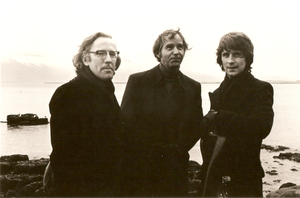
Often inspired by visual art (Hallgrimsson is himself an accomplished painter), his unique
language is both eerie and paradoxical. With repeated listening, the seemingly simple can
unveil mysterious depths, and what seems impenetrable can reveal itself with unexpected
clarity on repeated hearings.
Poemi, written for Jaime Laredo, is the first in a series of works for solo instrument/voice and
string orchestra. It was premiered in Iceland by Jaime Laredo and the Iceland Symphony Orchestra
in 1985, conducted by the composer.
Rima (1993) for soprano and string orchestra was commissioned by the Norwegian
Chamber orchestra and was premiered at the Arts Festival at the Winter Olympics
in Lillehammer in Norway in 1994 by Ragnhild Sörensen, soprano the Norwegian Chamber
orchestra, conducted by Terje Tönnesen.
Herma (1994-5) for cello and string orchestra was commissioned by William Conway and the
Scottish Chamber orchestra. It was premiered by the dedicatee and the Scottish Chamber
Orchestra in Central Hall Glasgow 1995, conducted by Ivor Bolton.
The next in the series is the viola concerto Ombra (1999) commissioned by the Icelandic
Broadcasting Corporation and dedicated to and premiered by Lars Anders Tomter and the
Scottish Chamber Orchestra conducted by Mikko Frank in St. Andrews in Scotland in 1999.
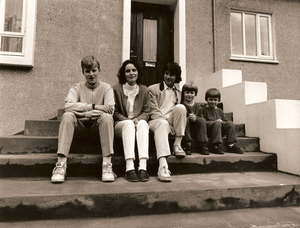
Although he admits to some major influences, Hallgrimsson's musical style is entirely
original, and to quote a well known Scottish critic, ”the music reflects the composer himself,
enigmatic, yet eloquent, inscrutable and self contained. He is a personality who finds voice in
his highly individual music”.
Involvement with the visual arts remains a key influence on Hallgrimsson's musical style, and
in 1996 he was commissioned by the Scottish Chamber Orchestra to write Still Life (1996)
in conjunction with a specially commissioned painting by Craigie Aitchison.
Aitchison's work is also an influence behind Hallgrimsson's large orchestral composition Crucifixion (1997) later to become Symphony no. I. This large-scale work was commissioned by the Royal Philharmonic Orchestra as a part of the Peter Maxwell Davies Millennium Programme of Commissions.
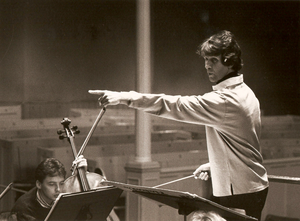
The Northlands Festival commissioned Mini-Stories in 1997, a music theatre piece for narrator
and ensemble setting translated texts by the Russian absurdist Daniil Kharms. It has since
been taken up by the Hebrides and Caput Ensembles.
It's deft evocation and bleak world of humour, nonsense and melancholy has been widely
acclaimed by audiences and critics.
In 2000 the Arts Association of Hallgrimskirkja in Reykjavík commissioned Passia, a work
for soloists, choir, orchestra and two organs to celebrate 1000 years of christianity in Iceland.
In 2002 Hallgrimsson was awarded a Nesta Fellowship for four years which led to a highly
productive period of composing.
A cello concerto was commissioned jointly by Oslo Philharmonic Orchestra, Scottish Chamber
Orchestra and the Icelandic Symphony Orchestra in 2003. The concerto was premiered by the dedicatee Truls Mörk and the Oslo Philharmonic at the Ultima Festival in Oslo 2003.
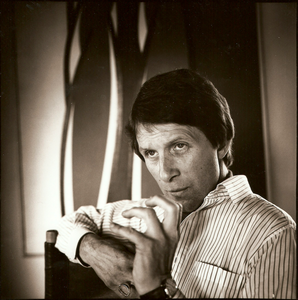
A premier of his opera Die Wält der Zwischenfälle (The World of Incidences, 2003) based
on texts by the Russian absurdist writer Daniil Kharms, was also premiered at Theatre
Lübeck in 2003 and received altogether eleven performances there and at the Museums
Quartier in Vienna the following year to unanimous critical acclaim.
Mini-Stories were also staged six times in 2004 by Semper Oper in Dresden (Kleine Szene)
Notes from a Diary (2005) for viola and piano, inspired by a visit to the Anne Frank Museum
in Amsterdam, was premiered at the International Viola Congress in Reykjavík that same year.
Several chamber works followed as well as a substantial composition for clarinet and orchestra,
La Serenissima (2007) revised and renamed The Bride of the Sea in 2012. It was inspired by a
visit to Venice and premiered in Oslo in its original form by Einar Jóhannesson and the
Norwegian Chamber Orchestra in 2007.
The Tampere Philharmonic in Finland and the Icelandic Symphony Orchestra commissioned
jointly the orchestral composition NARRATIVES FROM THE DEEP NORTH which
was premiered in Tampere 2008 by the Tampere philharmonic and John Storgards.
SONNAMBULO (2008) a concerto for double bass and orchestra, was commissioned by
the Scottish Bass trust. The piece was premiered at The Queen's Hall Edinburgh in 2009 by its dedicatee
Nicholas Bailey and the Scottish Chamber Orchestra, conducted by Baldur Brönneman.
In 2008 Hallgrimsson was appointed a composer in residence with the Icelandic Symphony
Orchestra and his large-scale Orchestral composition NORÐURDJÚP was premiered by
the Icelandic Symphony Orchestra and conducted by Rumon Gamba in March 2009, as a
part of the orchestras celebration of its 60th birthday.
In 2010 the Northland Symphony Orchestra commissioned HYMNOS, an orchestral
composition for the opening concert of Hof, the new cultural centre in Akureyri.
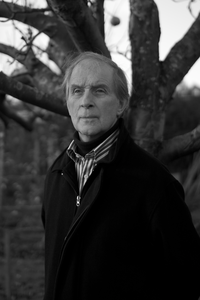
As a resident composer of the Iceland Symphony Orchestra, he has also composed a violin concerto for the brilliant young British violinist Jennifer Pike, who gave the world premier of the concerto in St. Andrew's in Scotland in December 2011 with the Scottish Chamber Orchestra, conducted by Enrique Mazzola.
In May 2017 a world premier of the definitive version of Five Songs for Soprano and Orchestra op. 52, setting poems by S.T. Coleridge, W. Blake and C. Rosetti, was given in Harpa in Reykjavík with Helena Juntunen as a soprano soloist, and the Iceland Symphony Orchestra conducted by John Storgards, to great critical acclaim.
At present Hallgrimsson is composing two works that will be premiered in 2018; a string trio commissioned by the Norwegian String trio Ssens, and Mysterium, a large scale composition commissioned by the Arts Society of Hallgrimskirkja in Reykjavík, for four soloists, two choirs, orchestra and organ.
